The 2025 Beijing Culture Forum was held on September 23 and 24, with “Inheritance, Creativity, Mutual Learning” as its theme. Some 800 domestic and international guests were in attendance, including prominent cultural figures, experts, business leaders, and other dignitaries from 58 countries and regions. They explored how digital innovation can boost cultural creativity, enhance public cultural services, and promote civilizational exchanges.
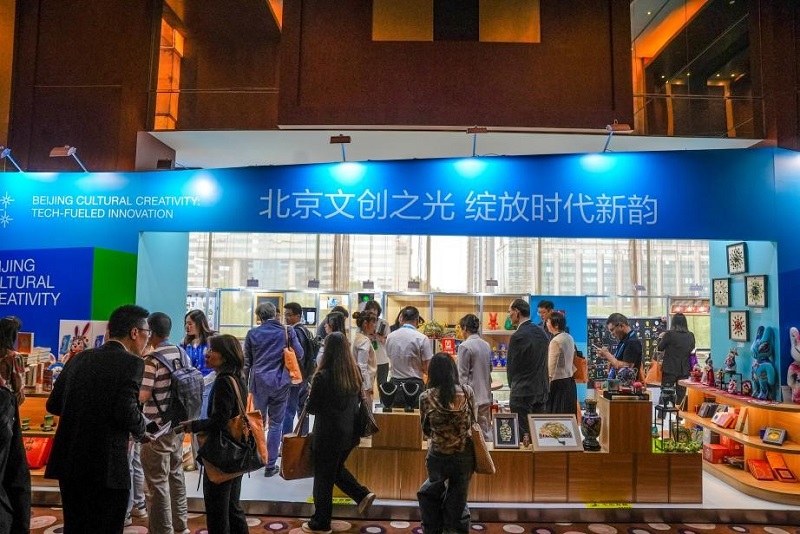
Domestic and international guests at the 2025 Beijing Culture Forum on September 23, 2025.
Reinterpreting Traditional Cultures
China and Italy are two of the world’s most ancient civilizations. Their millennium-long history of friendly exchanges has nourished a vibrant and ever-evolving cultural dialogue.
Guiseppina Merchionne, a renowned Italian sinologist, was one speaker at the parallel forum themed “Exchanges and Mutual Learning: Respecting the Diversity of Civilizations.” She spoke with China Today on the sidelines of the forum.
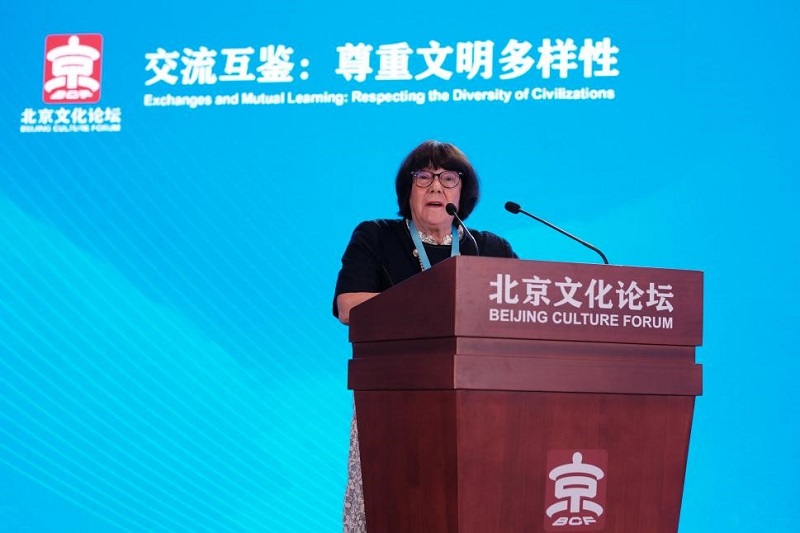
Guiseppina Merchionne gives a keynote speech at the Beijing Culture Forum on September 23, 2025.
“More than 700 years ago, Marco Polo traveled from Venice to China, and then carried the wisdom of the East back to the West, catalyzing a profound two-way exchange between the two civilizations. Following in his footsteps, I have made it my lifelong mission to introduce China’s culture, history, philosophy, and artistic thoughts to the people of Italy and to the wider Western world,” said Merchionne, professor of Chinese language and culture at University of Milan, Italy.
Merchionne came to study at Peking University in 1973, as one of the first group of Italian students after the establishment of diplomatic relations between China and Italy, and has since been dedicated to promoting cultural exchanges between the East and the West.
“I appreciate Confucius very much, because he represents Chinese culture and the foundation of Chinese philosophy. Confucius taught us to use culture for peace, not war,” she said.
“There are many schools of thought in ancient China, yet all share a primary concern: the protection and love of people. Italy and China, both big nations of culture, should therefore contribute even more to safeguarding world peace and developing human rights,” she added.
Merchionne believes that close attention must be paid to the origin and significance of the concept of human rights in Chinese society. It is widely recognized that in China this concept evolved alongside Confucius’s vision of human nature. In his view, “All men within the four seas under heaven are brothers” – a perspective that envisions a shared world system transcending geography and culture.
“The idea of universal brotherhood underlies Confucius’s revolutionary appeal for boundless love, a love that rises above every social or natural divide. It is within this Confucian vision of universal love that the notion of human rights attains its highest, most universal significance in Chinese cultural tradition,” she said.
As president of the Italy-China Center for Collaboration and Cultural Exchanges of the Silk Road, Merchionne observed that the ancient Silk Road and today’s Belt and Road Initiative both serve as vital arteries for global trade, cultural exchange, and people-to-people bond. “Development is a shared aspiration of the Italians and Chinese,” she said, adding that, “We all strive to secure and bequeath a better life for the next generation, and we have never stopped working toward that goal. That is why we must cooperate with every nation and walk the path of peaceful, common development together.”
Harold Weldon, vice president of Australia’s Wilton International Group, is a sinologist who has spent most of his life, from age 19 to 58, facilitating Chinese companies’ entry into Western markets and Australian companies’ entry into China.
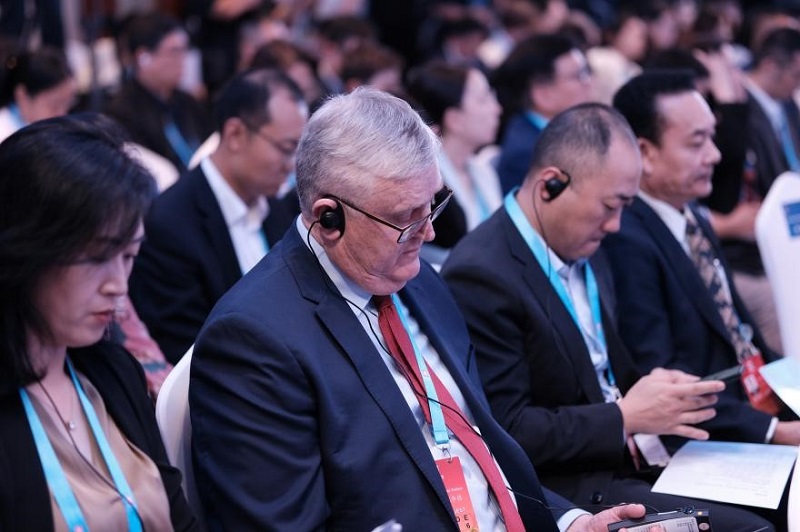
Harold Weldon (second, left) listens to the talks at the Beijing Culture Forum on September 23, 2025.
“Australians deserve a complete, authentic view of Chinese culture, not the narrow frame the headlines feed them,” Weldon told China Today, pointing out that traditional Chinese cuisine, Taoist insights, and Confucian values already speak to audiences worldwide.
For Weldon, the film Kung Fu Panda is the perfect case in point. “I love the movie, and it has fans everywhere,” he said. “It spotlights martial arts, meditation and other Eastern motifs, and beneath them you can sense the Chinese philosophy: inner balance and harmony, the very values our turbulent world craves.”
“Millions of foreigners now scroll through bite-size videos about China,” Weldon noted. “Short-video platforms like TikTok and Douyin are perfect, since 30 seconds can deliver something that really sticks. Micro-dramas and mini-series do the same, distilling the essence of Chinese culture for foreign viewers.”
Technology, he continued, doesn’t just decorate the message, it propels it. “With immersive tech you can stand inside a Song Dynasty (960-1279) scroll or walk around a Qing Dynasty (1644-1911) pavilion in 360 degrees, not just as a flat image. Such tools help people understand and enjoy each other’s cultures more deeply,” he said.
East-West exchange, Weldon stressed, must be a two-way bridge, not a one-way billboard. “Stereotypes collapse only when people step through the screen and experience the culture firsthand.”
The Beijing Culture Forum sealed his conviction. “The atmosphere is all consensus, harmony and teamwork. I’m ready, more than ever, to be the bridge that keeps China and the world talking,” Weldon said.
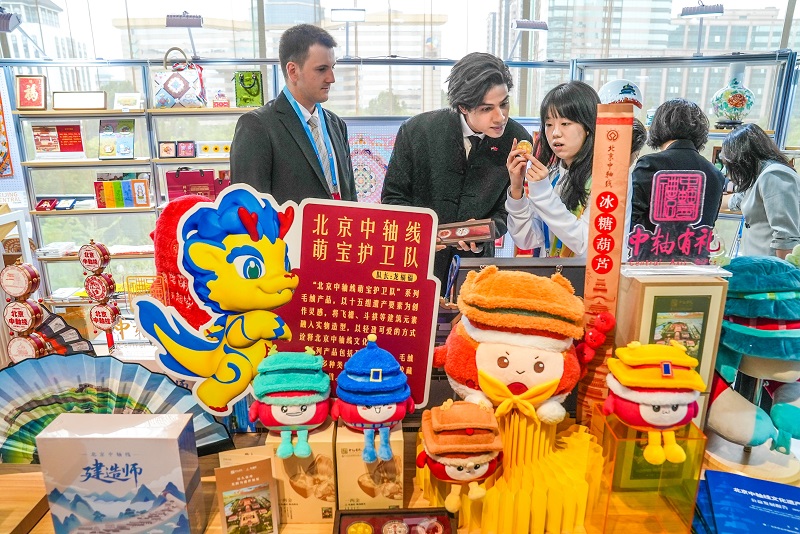
International guests show keen interest in the creative cultural products of Beijing’s Central Axis.
When Tech Meets Culture
Hang Min, associate dean and professor of International Development at Tsinghua University’s School of Journalism and Communication, told China Today how a cross-cultural lens can bring traditional Chinese culture into sharper global focus.
On July 27, the first anniversary of Beijing’s Central Axis being inscribed on the UNESCO World Heritage List, the docuseries Crafting Civilization: Beijing Central Axis, co-directed by British director Dominic Young and Chinese director Wu Qi, was named a 2024-2025 sustainability case. It traces the 750 years of the philosophical Chinese ideas of “zhong” (centrality) and “he” (harmony) that still shape the city and its people.
“The film’s hallmark is its global narrative logic,” Hang Min said. “Instead of explaining the Central Axis to people who already know it, it asks one universal question: ‘How did an ancient philosophy shape a great city?’ turning local heritage into shareable knowledge that instantly hooks overseas viewers.”
What’s more, the British director brings Western idioms of urbanism – vista, symmetry, public space – into dialogue with Chinese concepts of ritual sequence and cosmic order, creating not East-versus-West but idea-meets-idea conversations, a proof that Beijing’s Central Axis is not only China’s cultural property but also urban wisdom other civilizations can have a dialogue with.
Hang believes this process requires a fresh mining of classical Chinese thought for ideas that click with modern life. For instance, the Confucian ideal of “the benevolent loves others” can speak to today’s spirit of philanthropy; the notion of “unity of Heaven and humanity” aligns with current environmental and sustainability concerns; and the principle of “harmony in diversity” mirrors present-day visions of global governance. These concepts can be reinterpreted for the modern era through inward, intensive cultivation.
She also calls for harnessing new technology, media, and business models, blending culture with tourism, fashion, education, and more, so tradition becomes something people can taste, wear, use and share every day.
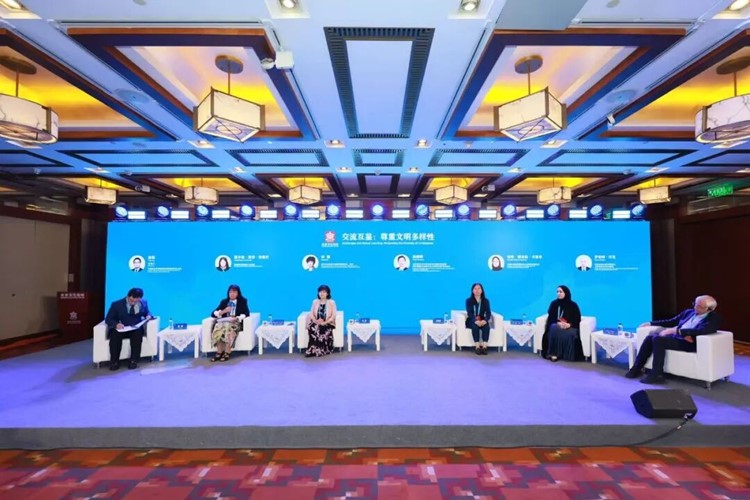
Hang Min (third, left) and Yang Yueming (third, right) attend the roundtable discussion during the Beijing Culture Forum on September 23, 2025.
Yang Yueming, UNESCO culture expert and professor at Beijing Normal University’s Institute for Culture Innovation and Communication, echoed Hang Min’s perspective. Pointing again to Beijing’s Central Axis, she said digitization allows the world to grasp its grandeur at a glance: “Laser-scan every site, feed the data into VR, AR or a game, and in one seamless, bird-like glide you can fly over the entire 750-year-old spine from the Bell and Drum Towers to the Yongdingmen Gate.”
Yang cited the 2022 AR hit Horizon: The Lost Pharaoh, also known as The Vanished Pyramid. From Shanghai to Chengdu, visitors wearing a high-tech headset can crawl through digital tunnels, step onto an endless star-field and gaze down at the entire Giza complex. A mummy is close enough to touch and the cat-goddess Bastet answers questions in real time.
By turning cold stone into living story, the technology wraps heritage in warmth and emotion, shrinking the distance between the present and the past, while giving local treasures an instant worldwide audience.
“The future of cultural sustainability lies in ‘shared beauty and harmonious coexistence.’ As renowned Chinese sociologist Fei Xiaotong reminded us, we must recognize both difference and diversity among cultures. That diversity needs many stages like literature, games, film, television, and increasingly more tech-powered, AI-enhanced platforms to let every culture be seen, heard and live on,” Yang concluded.